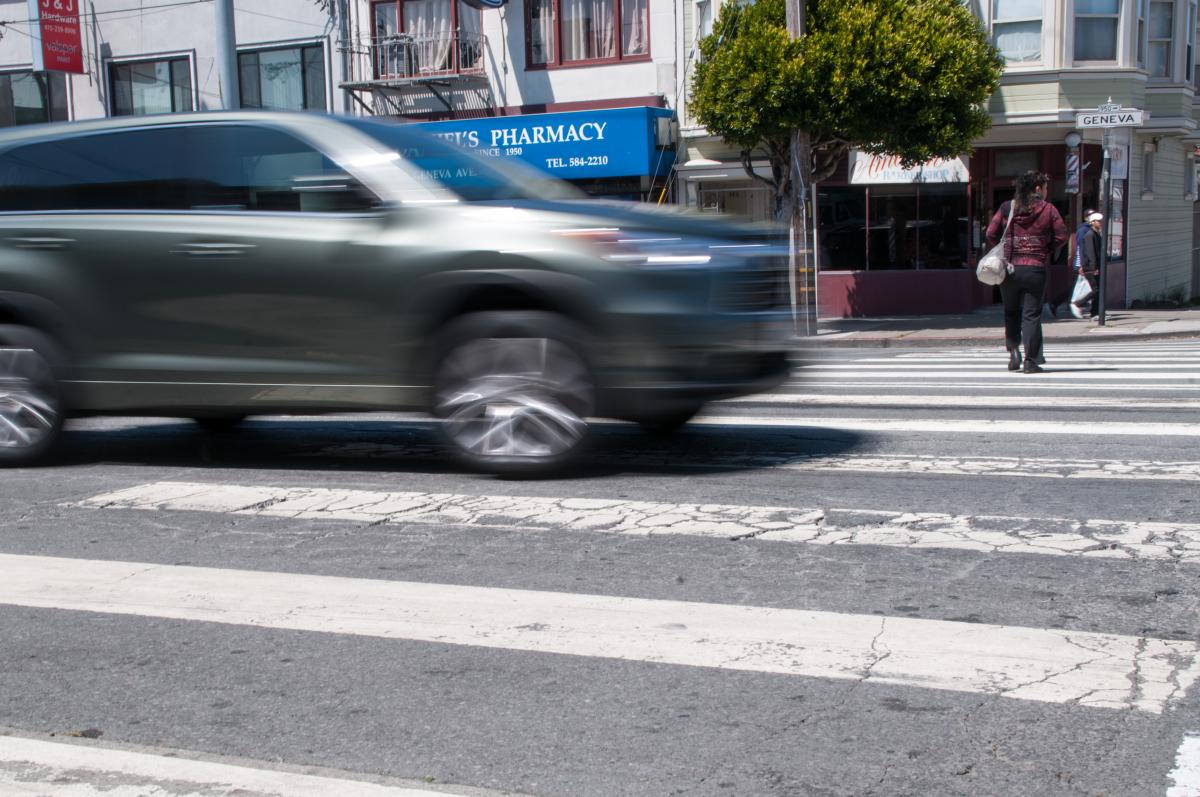 A new roadway safety tool will make San Francisco's streets safer in 2025. Here’s everything you need to know about Automated Speed Enforcement cameras.
A new roadway safety tool will make San Francisco's streets safer in 2025. Here’s everything you need to know about Automated Speed Enforcement cameras.
What is an Automated Speed Enforcement (ASE) Camera?
Speed is the leading factor in collisions on San Francisco’s streets. Multiple street safety studies have shown that the faster a vehicle travels before a collision, the lower the survival rate is for the occupants and other victims outside the vehicle. ASE cameras are a well-used tool to discourage dangerous vehicle speeding on neighborhood streets and highways. Widespread across Europe, the Middle East and many U.S. States, these cameras capture the license plate number of vehicles traveling over the posted speed limit. A citation is then issued to the vehicle owner.
Why Is San Francisco Getting Speed Enforcement Cameras Right Now?
Safety advocates and politicians alike have long championed speed enforcement cameras as a critical way to address the growing rates of injuries and fatalities on our roadways. In 2023, the California State Legislature passed Assembly Bill 645, which authorized six cities, including San Francisco, to pilot the cameras for five years. The SFMTA has been working tirelessly to build this new program since the bill was signed into law. Our staff has been gathering data on speeding in the city, selecting camera locations and meeting with community-based organizations. We’re excited to bring this new safety tool to our city in early 2025.
How Speed Enforcement Camera Locations Were Chosen
Simply put, AB 645 spelled out how to select locations for these cameras.
First, cameras could only be installed on a street if one of three requirements were met:
- The street was previously designated a safety corridor with a high proportion of injury-related crashes.
- The street has a high number of vehicle racing incidents.
- Or the street is located in a school zone.
For San Francisco, the decision was clear: to install cameras on our High-Injury Network (HIN), which is the 12% of city streets that account for 68% of our serious and fatal roadway injuries. State law also specified that cameras could only be installed on city-owned streets (so freeways and state-owned roads like 19th Avenue or Lombard Street would not qualify) and that cameras should be geographically dispersed throughout the city.
The process for selecting camera locations began with a review of speed-related collisions on HIN streets. The team then identified locations along these streets where more vulnerable roadway users might be present, such as near schools, senior service centers, parks and areas with high pedestrian activity. Finally, individual block segments suitable for speed cameras were identified within these areas — blocks with clear sight lines, with existing mid-block streetlight poles owned by the city.
This initial analysis yielded more than 70 locations throughout San Francisco. Using pneumatic tubes or radar, the SFMTA collected vehicle speed and volume counts at each location. This detailed data was then analyzed to identify locations with the highest percentage of vehicles traveling 10 MPH or more over the posted speed limit. AB 645 sets 11 MPH or more as the speeding threshold that speed safety cameras will target.
Where Are Speed Cameras Going to be Installed?
The data-driven process for selecting camera locations has identified 33 recommended speed camera locations. These locations are in every corner of the city, in neighborhoods that may look different from one another, but all have vehicles traveling too fast. They are geographically distributed along San Francisco’s High Injury Network, with at least two cameras in each Supervisor’s district and at many key freeway touchdown points in the city.
These cameras will enforce lower speeds outside of eight school sites, 12 parks, 11 social service sites serving seniors and people with disabilities and 12 neighborhood commercial districts where many people walk or bike. Furthermore, the cameras will be located on streets that reflect the full diversity of San Francisco’s neighborhoods—the makeup of key socioeconomic characteristics in the 33 camera areas is roughly equal to the makeup of those indicators in San Francisco as a whole.
The entire list of recommended camera locations can be found on the Speed Safety Camera program page.
What’s Next for ASE in San Francisco?
On Tuesday, March 19, staff will update the SFMTA Board of Directors on the program’s progress. We will also present the data we collected and discuss the locations chosen for speed cameras in more detail. The data also is now live on the Speed Safety Camera program page. The SFMTA Board will vote to approve the camera locations in the next few months.
Next, the SFMTA will work on completing the development of other critical aspects of the ASE program, including selecting a camera vendor, finalizing the citation process, building a community education and awareness campaign and much more.
Automated Speed Enforcement cameras are expected to launch in early 2025. We look forward to sharing more information about the program in the coming months.
To learn more about the SFMTA’s Automated Speed Enforcement efforts, visit the Speed Safety Camera program webpage.